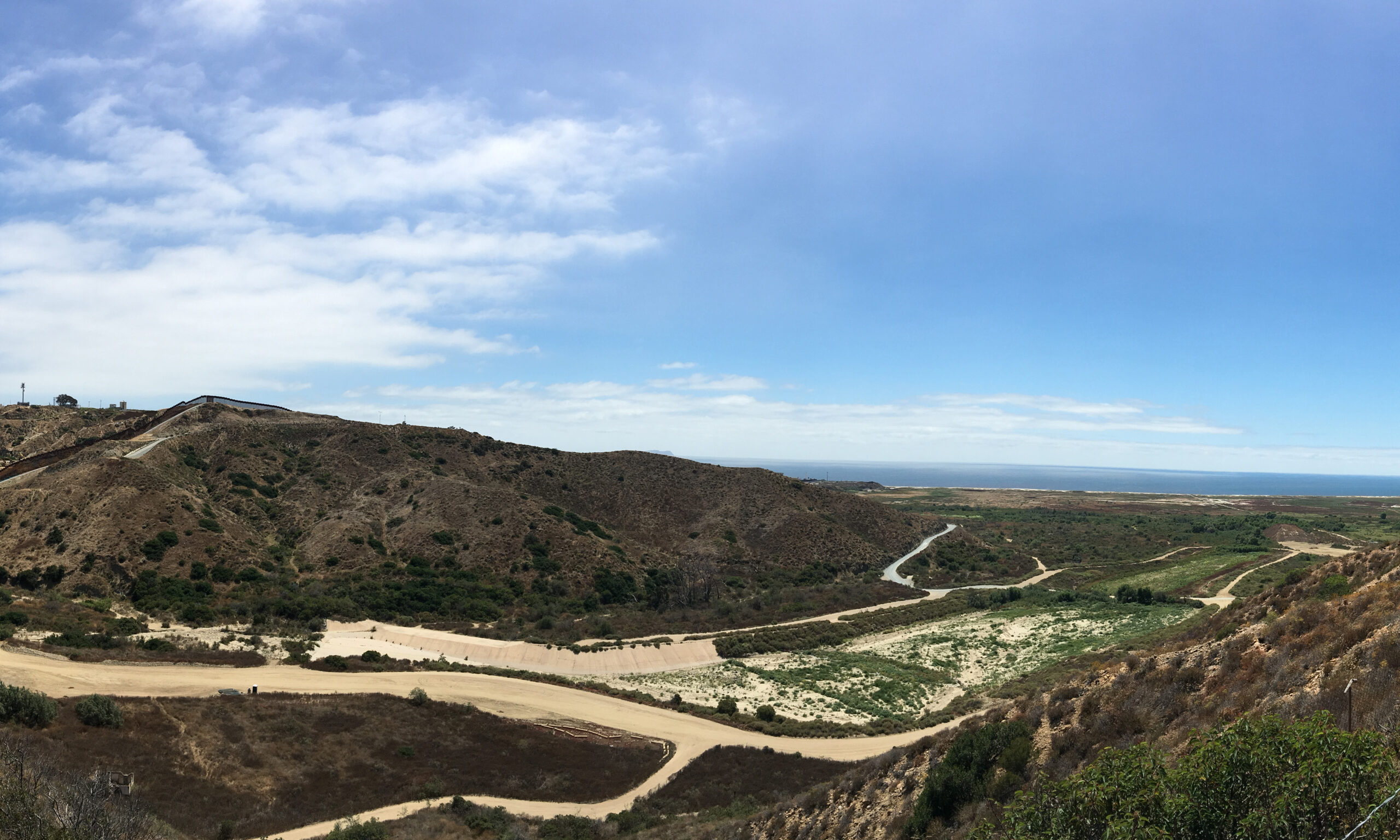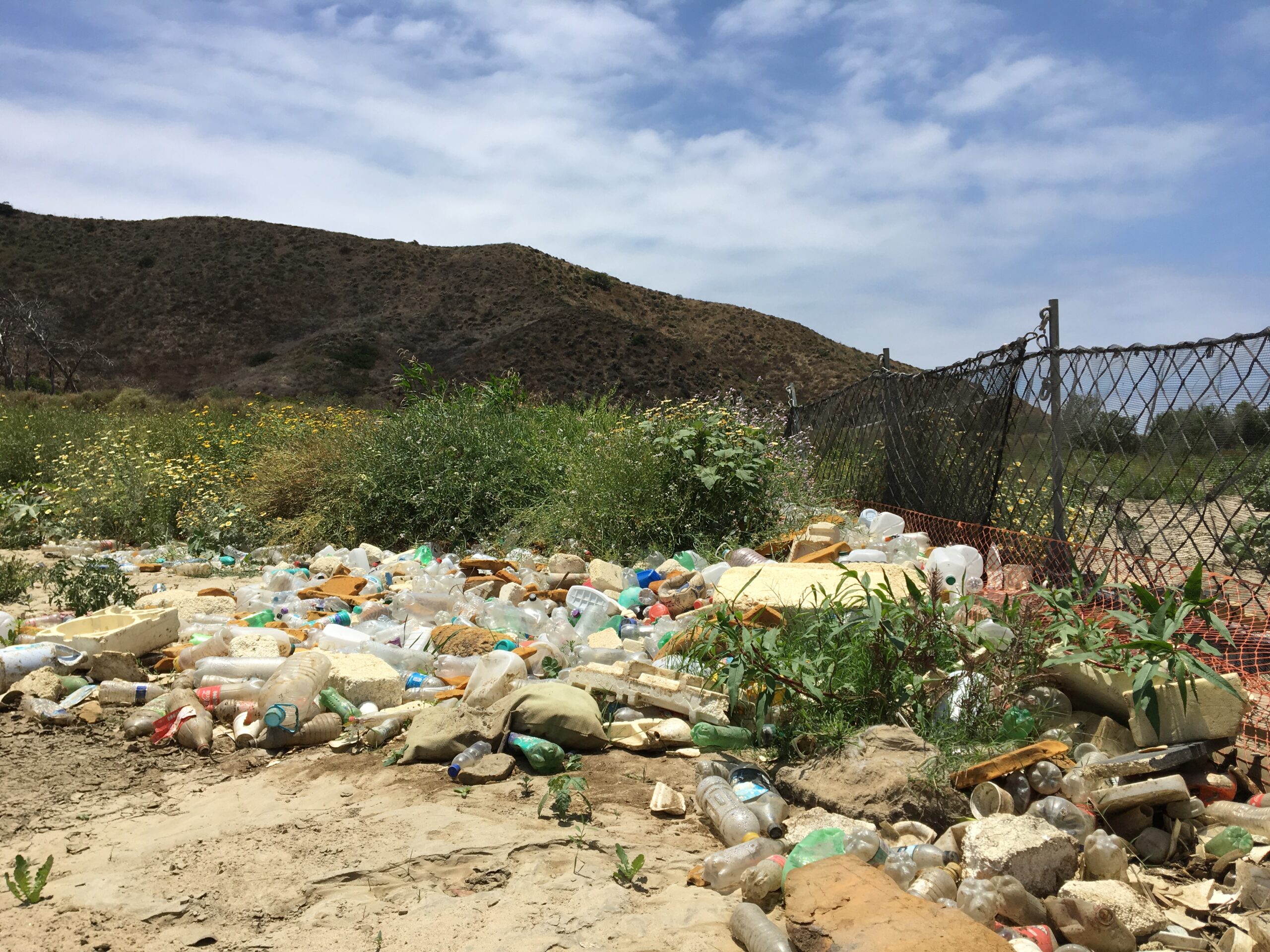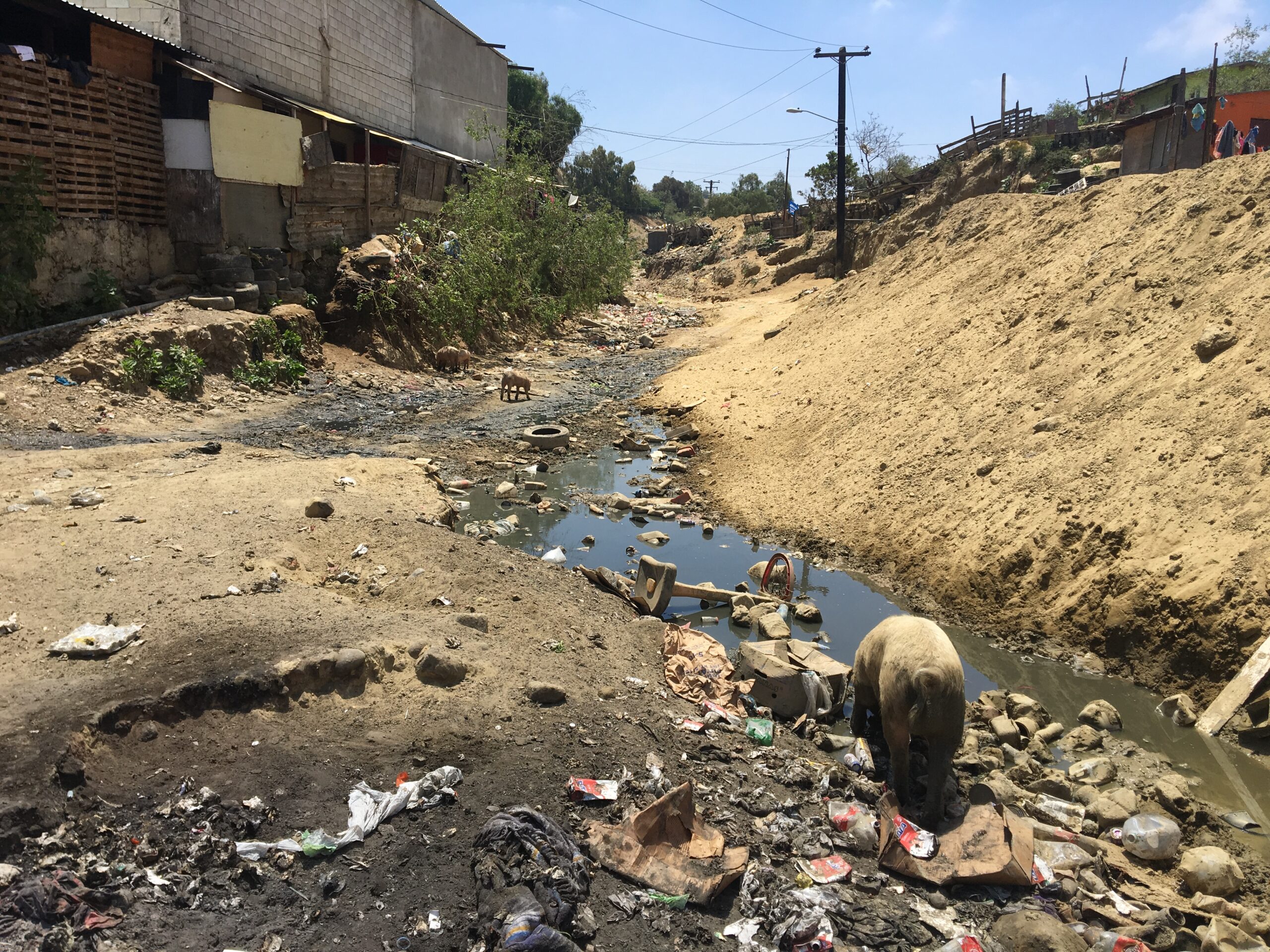The Tijuana River Watershed: Going from Plastic to Prosperity
How creative thinking can improve the health of the Tijuana River at the U.S.-Mexico border

The Tijuana River Watershed spans 120 miles across northern Baja California and up into southern California, split by the U.S.-Mexico border wall just ten miles south of downtown San Diego. During the rainy season, downpours hit the desert sand and quickly swell, coursing north. As they flow through communities, they cause significant erosion and accumulate debris, pouring through large flood gates along the border wall. North of the border, receiving the load of plastics, sediment and other debris, is California’s Border Field State Park. Each year, the state of California spends $1.8 million on cleaning, sorting and transporting the waste deposited in the park’s Goat Canyon Sediment Basin Complex.
In June, my Ocean Conservancy colleagues Chever Voltmer, Eric DesRoberts, Kyle O’Connor and I travelled to San Diego and Tijuana to join Steven Wright and Waylon Matson of 4 Walls International, a nonprofit that uses trash to construct community centers and improve infrastructure in the Tijuana region, and PhD students from University of California-Irvine studying sediment dynamics, to better understand the phenomenon.

In Border Field State Park, a nesting ground for many endangered bird species, we saw thousands of plastic containers and bottles mixed in with sediment and flora. As we stood at the bottom of the basin, a state employee explained that during the rainy season each year the expansive basin’s floor rises ten feet as it fills with debris and sediment. Right at the edge of the basin is the Tijuana River Estuary and the Pacific Ocean. On the southern side, in Tijuana, debris is bountiful by the waterways and it is easy to imagine it getting swept away. Wright mentioned that sometimes mattresses, tires and larger items get washed out, too. Often this trash blocks local drains, causing massive sewage spills that pollute the estuary and nearby ocean, resulting in beach closures and tourism losses.
The PhD students in the SedRISE program at University of California-Irvine have been modeling the system to identify hotspots and evaluate upstream interventions on the Mexican side of the border. Three locations in Los Laureles Canyon in Tijuana, Baja California, could be targeted to remediate the downstream effects. Resurfacing roads, removing illegal dump sites, prioritizing recycling and building erosion control and green infrastructure have worked well in Los Laureles Canyon over the last ten years—all of which would not only reduce the amount of debris crossing the border, but improve the border communities’ quality of life and infrastructure, as well as providing opportunities for employment.

The week of our border site visit, Ocean Conservancy and 4 Walls International convened stakeholders from NGOs, local communities, government offices and scientific institutions to discuss what the future may hold for funding infrastructure along the Tijuana River Watershed. Right now, a Border Impact Bond—an Environmental Impact Bond model that would monetize future cost savings brought by the interventions in the three hot spots—is under consideration.
The bond could demonstrate the value and cost-effectiveness of upstream action, as well provide the perfect laboratory to measure the impact of specific interventions to stop the flow of trash to the ocean. Improving water quality for the residents of the region on both sides of the border would be the icing on the cake. If successful, this cross-border finance mechanism has the potential to provide inspiration for dozens more similar border and/or waste management projects that could improve our environment—marine and otherwise.
At Ocean Conservancy, we’re eager to support this innovative solution to a complex problem. Research shows that a main cause of ocean plastic pollution is a lack of funding for basic waste management systems. While a lot of the focus has been on parts of Southeast Asia where the problem is most acute, funding is needed close to home, too, as evidenced by what we saw on the border. The reality is that so long as people are using and disposing of items, those items need to be collected to make sure they stay out of the environment, and that costs money. We’re excited that the impact bond may come to fruition. We’ll keep you updated.